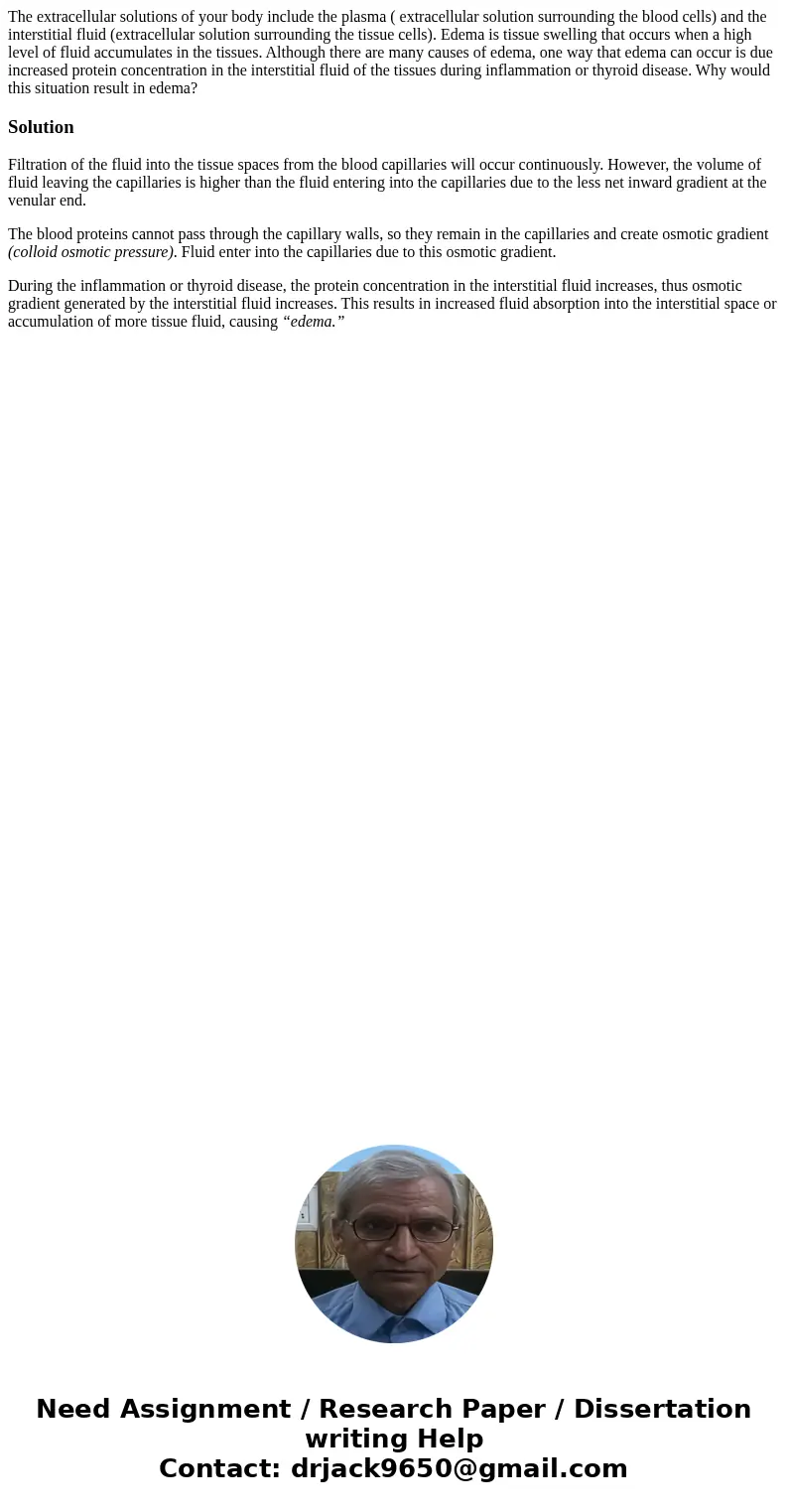The extracellular solutions of your body include the plasma
The extracellular solutions of your body include the plasma ( extracellular solution surrounding the blood cells) and the interstitial fluid (extracellular solution surrounding the tissue cells). Edema is tissue swelling that occurs when a high level of fluid accumulates in the tissues. Although there are many causes of edema, one way that edema can occur is due increased protein concentration in the interstitial fluid of the tissues during inflammation or thyroid disease. Why would this situation result in edema?
Solution
Filtration of the fluid into the tissue spaces from the blood capillaries will occur continuously. However, the volume of fluid leaving the capillaries is higher than the fluid entering into the capillaries due to the less net inward gradient at the venular end.
The blood proteins cannot pass through the capillary walls, so they remain in the capillaries and create osmotic gradient (colloid osmotic pressure). Fluid enter into the capillaries due to this osmotic gradient.
During the inflammation or thyroid disease, the protein concentration in the interstitial fluid increases, thus osmotic gradient generated by the interstitial fluid increases. This results in increased fluid absorption into the interstitial space or accumulation of more tissue fluid, causing “edema.”

 Homework Sourse
Homework Sourse